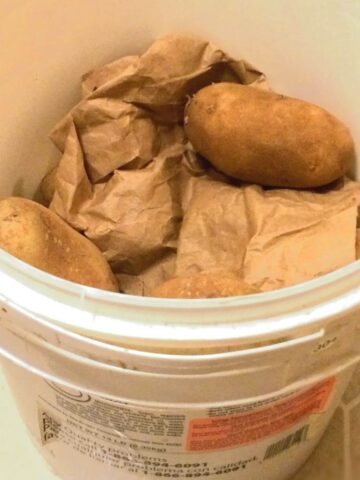No matter where you live, rice can be seen as a staple food. It's known to be healthy and filling, relatively easy to make, and affordable. With that said, there's always been the concern for high arsenic levels in rice. I was always taught that the best method to remove "some" arsenic was to rinse rice before cooking.
Then, along comes this study and my methods have changed. We have started to use this method in our home and while it does take a few more minutes and a bit more hands-on attention, it's worth it for the health and well-being of my family. Not to mention, I have found it to result in much fluffier rice whether I use brown or white and my rice doesn't stick to the bottom of my pot. Win win.
I've provided a summary of the study as well as a reference and link to the actual report at the bottom. You can also find an image with the recommend cooking method that we now have posted above our stove, taken from the study itself.
A recent study published in Science of The Total Environment found the most effective method of removing the largest amount of arsenic from rice, while still retaining the most nutrients.
Why is this so important? Arsenic is a group 1 carcinogen that is soluble and it can remain on the surface of foods.
Brown rice ("unmilled or unpollished"), is often seen as the healthier choice between white and brown due to its increased nutrients. However, it also contains higher levels of arsenic due to it being less processed.
The study compared 4 different methods of cooking white and brown rice to find which method removed the most arsenic, while still retaining the most nutrients.
- When you add water to uncooked rice and cook at low temperature, (in a rice cooker, crock pot, on the stove) that is considered an unwashed and absorbed method. You're adding just enough water to be completely absorbed during the cook.
- You can also choose to wash or rinse your rice prior to using the absorption method.
- You can take it a step further and choose to pre-soak your rice prior to the absorption method.
- The last method is termed parboiled and absorbed (PBA). With this method you boil water first, add the rice to boil for 5 additional minutes, remove the arsenic water, then add fresh water to cook at a low temperature for the water to absorb.
The study found that option 4, parboiled and absorbed (PBA), "was the optimum approach assessed, removing 54% and 73% of inorganic arsenic for brown and white rice respectively."
They continue to state that removing that amount of arsenic increases the safety of consuming for "infants, children and adults."
Additionally, they found that the PBA method also retained the most nutrients (brown rice slightly more than white).
Some countries use a method of cooking rice in excess amounts of water (eg. 1 cup rice: 6 cups water). This method has been found to be effective in decreasing arsenic because in the end you are removing the excess water. However, this method is often not practical for home use and still not as effective as the PBA method.
With the common method of absorption, where you slowly cook rice in water with a 1:2 ratio, respectively, until all water is absorbed, you are able to retain nutrients in the rice, but it doesn't remove arsenic since you're not removing any water.
Below you can find a helpful image that clearly displays the steps to use the most effective, PBA method.
I have also created a separate recipe that includes cook times in my post How to Remove Arsenic from Rice (all rice types) if you find that helpful.
I hope you all try this new method and can begin to make healthier rice for you and your families!

Credit: Manoj Menon et al.
You can continue to the full research article here:
Improved rice cooking approach to maximize arsenic removal while preserving nutrient elements
Study Source:
Manoj Menon et al. Improved rice cooking approach to maximize arsenic removal while preserving nutrient elements, Science of The Total Environment (2020). DOI: 10.1016/j.scitotenv.2020.143341



Leave a comment and rating, I'd love to hear from you!